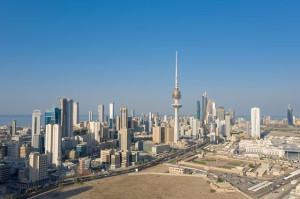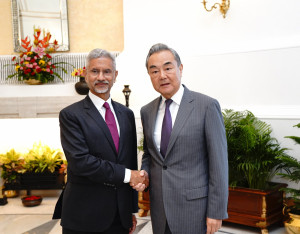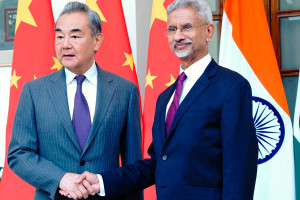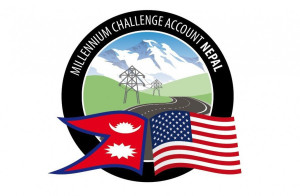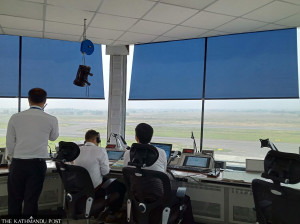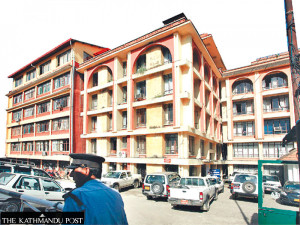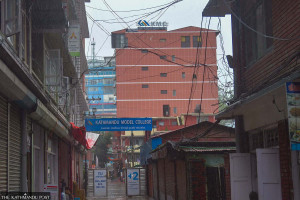National
Experts call for controlling vehicular emissions for improving air quality in Kathmandu Valley
Vehicles are major air polluters, which can be reduced through the better management of the public transport sector, promotion of clean vehicles and enforcing existing policies, experts say.
Chandan Kumar Mandal
Environmentalists and public health experts have stressed the need for reducing pollution from the transport sector to improve the air quality and avert deaths caused by air pollution.
A recently published State of Global Air report said 42,100 deaths in Nepal were attributed to air pollution in 2019. Of the total air pollution-related deaths that year, PM2.5 pollution was responsible for 17,900 deaths.
Nepal is one of the most polluted countries in the world and Kathmandu Valley is among the most polluted places along with several other cities.
During a virtual interaction entitled “Science-Policy Dialogue on air pollution from the transport sector and its health impacts in Kathmandu Valley”, experts highlighted the urgency of minimising pollutants emanating from the transport sector.
According to Shankar Sharma, programme officer with Clean Energy Nepal, controlling emission from the transport sector, which is the major polluter in Kathmandu Valley, not only improves air quality but also averts deaths.
“A recent Kathmandu University study has shown that hundreds of lives can be saved only if we improve the transport sector and make it more managed and clean,” Sharma said. “With a better transport sector plan supported with interventions to cut down the vehicular exhaust and introduction of environment-friendly transportation facilities, 3,091 to 15,722 deaths due to air pollution can be averted in different scenarios.”
Such estimation on the reduced number of deaths due to polluted air was calculated using the WHO modelling tool called Integrated Sustainable Transport Carbon-Health Economic Assessment Tool for assessing vehicle emission and health impacts under different scenarios.
Researchers had estimated health benefits for different scenarios if the transport sector was managed by improving existing transport routes, improving imports of fuel quality, adding electric buses and promoting cycling and walking.
The transport sector is one of the leading air polluters in Kathmandu Valley, where PM 2.5 levels are often recorded five times more than the WHO standards. The quality of air deteriorates during the winter season, worsening by four to five times than the monsoon season.
According to a study by the Department of Environment in 2017, the transport sector contributed 28 percent of pollutants in Kathmandu Valley. Another study by the same government authority showed that out of 318 days when air quality of Ratnapark was studied, for 119 days the pollution level had crossed the safety standards.
“Air pollution has a direct linkage with public health. Poor air quality has also come as a reason behind non-communicable diseases around the world,” said Raja Ram Pote Shrestha, a representative with WHO Nepal office. “If we go with the annual deaths caused due to air pollution as reported by the Global State of Air 2020, then we are losing more than 100 lives every day because of air pollution. Several studies over the years have shown that the transport sector emits around one-third of pollution in the Kathmandu Valley, which means if we want to improve air quality, we must focus on the transport sector.”
According to data with the Department of Transport Management, of more than one million vehicles registered in the Bagmati zone by 2017, nearly 90 percent were running inside Kathmandu Valley.
“The number of vehicles continues to rise in the Valley, which further contributes to polluting the air quality,” said Rajeshor Paudel, environment inspector with the Department of Environment. “The department is implementing various activities outlined in the latest Kathmandu Valley Air Quality Management Action Plan.”
Experts highlighted the need for effective implementation of existing plans and policies for managing the transport sector, optimising public bus routes, enforcing pollution standards for existing vehicles and making streets safer for pedestrians and cyclists as means to reduce pollution from vehicles.
A random emission test in 2018 had found that 37 percent of the petrol-operated vehicles and 51 percent of the diesel-run vehicles in Kathmandu Valley exceeded the emission limits.
“Only policies will not be adequate in controlling transport sector pollution,” said Ram Chandra Poudel, technical director with the Department of Transport Management. “We need infrastructure, dedicated human resources and commitment from all stakeholders for improving the air quality of Kathmandu Valley. Besides, we should also focus on giving more incentives and take steps for the import and production of electric vehicles and simplify the test and registration process.”
The recently prepared Nepal’s Nationally Determined Contribution (NDC), which was submitted to the UN, has also set massive targets for promoting electric vehicles by 2030.
“Existing plans and policies are not enough for limiting vehicular emission in Kathmandu Valley. We need to have more ambitious goals,” said Prashanta Khanal, an expert in clean air and urban mobility. “Concerned agencies should start thinking when we will completely stop the operation of fossil fuel-run vehicles which many cities around the world have already started.”




 20.03°C Kathmandu
20.03°C Kathmandu









